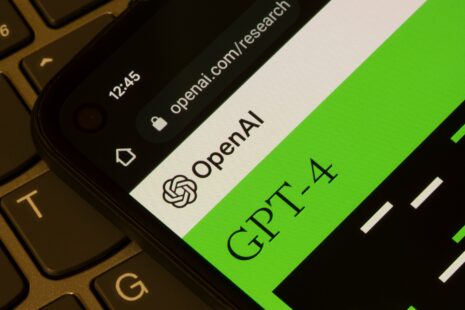AI helps businesses save money in some ways by improving efficiency, reducing costs, and optimizing operations.
Key areas where AI can have a significant impact on cost savings…
Automation of Repetitive Tasks
- Reducing Labor Costs – AI can automate routine tasks such as data entry, customer service inquiries (via chatbots), scheduling, and inventory management. This reduces the need for manual labor, allowing businesses to reallocate resources to more strategic roles.
- Process Automation – AI-powered tools like Robotic Process Automation (RPA) handle time-consuming processes in areas like finance, HR, and supply chain management, cutting down on operational costs.
Improved Efficiency and Productivity
- Faster Decision-Making – AI systems analyze large amounts of data in real time, providing businesses with actionable insights and predictions. This enables quicker, data-driven decisions, which can streamline operations and reduce waste.
- Optimized Operations – AI helps optimize supply chains by predicting demand, adjusting production schedules, and managing inventory more effectively. This reduces excess stock, minimizes storage costs, and prevents stockouts.
Customer Service Cost Reduction
- AI Chatbots – Implementing AI chatbots for customer support helps handle high volumes of customer inquiries without the need for a large customer service team. Chatbots can address basic questions, process orders, and troubleshoot issues, which cuts down on the cost of maintaining a large support staff.
- 24/7 Availability – AI-driven customer service solutions provide round-the-clock support, ensuring customer satisfaction while reducing the need for night shifts and overtime pay.
Predictive Maintenance
- Lower Maintenance Costs – In industries like manufacturing, AI can predict when machines and equipment are likely to fail by analyzing data from sensors. This allows companies to perform maintenance only when needed, rather than conducting costly and unnecessary scheduled maintenance or dealing with unexpected breakdowns.
- Reducing Downtime – Predictive maintenance helps minimize downtime by fixing issues before they disrupt operations, leading to significant cost savings.
Energy Efficiency
- Optimizing Energy Usage – AI can monitor and optimize energy consumption in facilities, warehouses, and factories. By predicting when equipment should be used and adjusting temperature, lighting, or HVAC systems accordingly, businesses can reduce energy waste and lower utility bills.
Fraud Prevention
- Real-Time Fraud Detection – AI can analyze transaction data in real time to identify unusual patterns and prevent fraud. For example, banks and retailers use AI algorithms to detect unauthorized transactions or identify potential threats, minimizing financial losses and reducing the costs associated with fraud investigations and chargebacks.
Supply Chain Optimization
- Reducing Shipping Costs – AI helps businesses optimize their supply chain by predicting demand more accurately, selecting the best shipping routes, and minimizing inventory holding costs. This allows businesses to cut down on excess inventory and shipping expenses.
- Inventory Management – AI tools forecast demand trends and adjust stock levels accordingly, reducing the need to overstock inventory, which can lead to reduced storage and stock clearance costs.
Marketing and Advertising Efficiency
- Targeted Advertising – AI allows businesses to run more cost-effective marketing campaigns by analyzing customer behavior and predicting which advertisements are most likely to convert. This leads to more efficient ad spending and higher return on investment (ROI).
- Personalized Offers – AI can personalize promotions and discounts for customers, improving conversion rates without spending extra on broad, untargeted marketing efforts.
Improved Hiring and Talent Management
- Recruitment Automation – AI can streamline the hiring process by automatically screening resumes and identifying the best candidates based on predefined criteria. This reduces the time and resources spent on recruitment, allowing HR teams to focus on the final stages of hiring.
- Employee Retention – AI can analyze employee data to identify potential issues and predict turnover, allowing businesses to address concerns proactively and reduce the costs associated with hiring and training new employees.
Data-Driven Insights for Cost Control
- Expense Management – AI can analyze spending patterns across departments, identify areas of overspending, and recommend cost-cutting measures. This allows businesses to control their budgets more effectively and reduce unnecessary expenses.
- Financial Forecasting – AI-driven financial models can predict future cash flow, helping businesses plan their budgets and investments more accurately, avoiding financial shortfalls or overspending.
AI helps businesses save money by automating tasks, improving operational efficiency, reducing energy consumption, preventing fraud, and optimizing customer service. By making smarter decisions and streamlining processes, businesses can cut costs, enhance productivity, and improve their bottom line.





